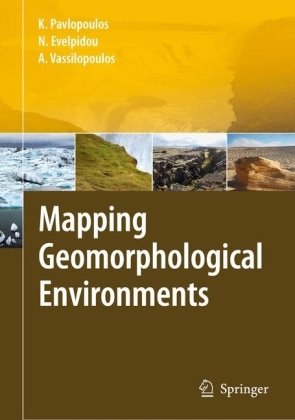

Most ebook files are in PDF format, so you can easily read them using various software such as Foxit Reader or directly on the Google Chrome browser.
Some ebook files are released by publishers in other formats such as .awz, .mobi, .epub, .fb2, etc. You may need to install specific software to read these formats on mobile/PC, such as Calibre.
Please read the tutorial at this link: https://ebookbell.com/faq
We offer FREE conversion to the popular formats you request; however, this may take some time. Therefore, right after payment, please email us, and we will try to provide the service as quickly as possible.
For some exceptional file formats or broken links (if any), please refrain from opening any disputes. Instead, email us first, and we will try to assist within a maximum of 6 hours.
EbookBell Team

4.7
36 reviewsMapping Geomorphological Environments is a highly descriptive textbook providing an excellent introduction to the latest methodologies for mapping geomorphological formations in a variety of different environments.
Its holistic approach seeks to provide a meaningful linkage between state of the art techniques for geomorphological mapping, including the latest innovations in geospatial applications, and advances in the understanding of the formation of geomorphological phenomena in a variety of settings and environments.
The book includes: - An introduction to the processes which form geomorphological formations and how to map them. - Case studies from a variety of environments with many examples of geomorphological maps. - In-depth descriptions of the latest tools and methodologies such as field sampling, GPS usage, 3–4D mapping, GIS analysis, digital image analysis, etc. - A list of the geomorphological characteristics per environment (e.g. coastal, fluvial, etc.) in the format of a geomorphological encyclopaedia, with pictures, maps and symbols.
It covers the entire workflow ranging from data collection, analysis, interpretation, and mapping.
Acknowledgements
All authors would like to acknowledge the contribution of Dr. John W.M. Peterson, School of Computing Sciences, University of East Anglia, Norwich, UK, for corrections and improvement to the English text..
Universit� Telematica Guglielmo Marconi (UTGM) and ENEA acknowledge the collaboration of CUTGANA (Centro Universitario per la Tutela e la Gestione degli Ambienti Naturali e degli Agroecosistemi), Universit� di Catania, for the paper on "The Cyclops Islands".
IRMCo acknowledges the use of the Integrated Land and Water Information System (ILWIS), developed by ITC, the Netherlands, for the management and assessment of geographic information in a GIS environment. ILWIS functionality was employed for the paper on "The natural heritage of the Island of Gozo" and the paper on "The geomorphological cave features of Ghar il-Friefet".
IPB (Polytechnic Institute of Bragança) wishes to acknowledges all those colleagues, most of them also members of CIMO (Centre for Mountain Research), that contributed to the recently issued Management Plan of Montesinho Natural Park (PNM). Their hidden contribution to the articles concerning PNM is much acknowledged. A word in recognition of his endless and contagious enthusiasm towards Montesinho and to the Mountain domain, spread among us all in the IPB, is due to Professor Dionísio Gonçalves, the first Director, Coordinator and President of PNM, CIMO and IPB, respectively. The authors of the photos inserted in the articles concerning Montesinho are also much acknowledged for their contribution.